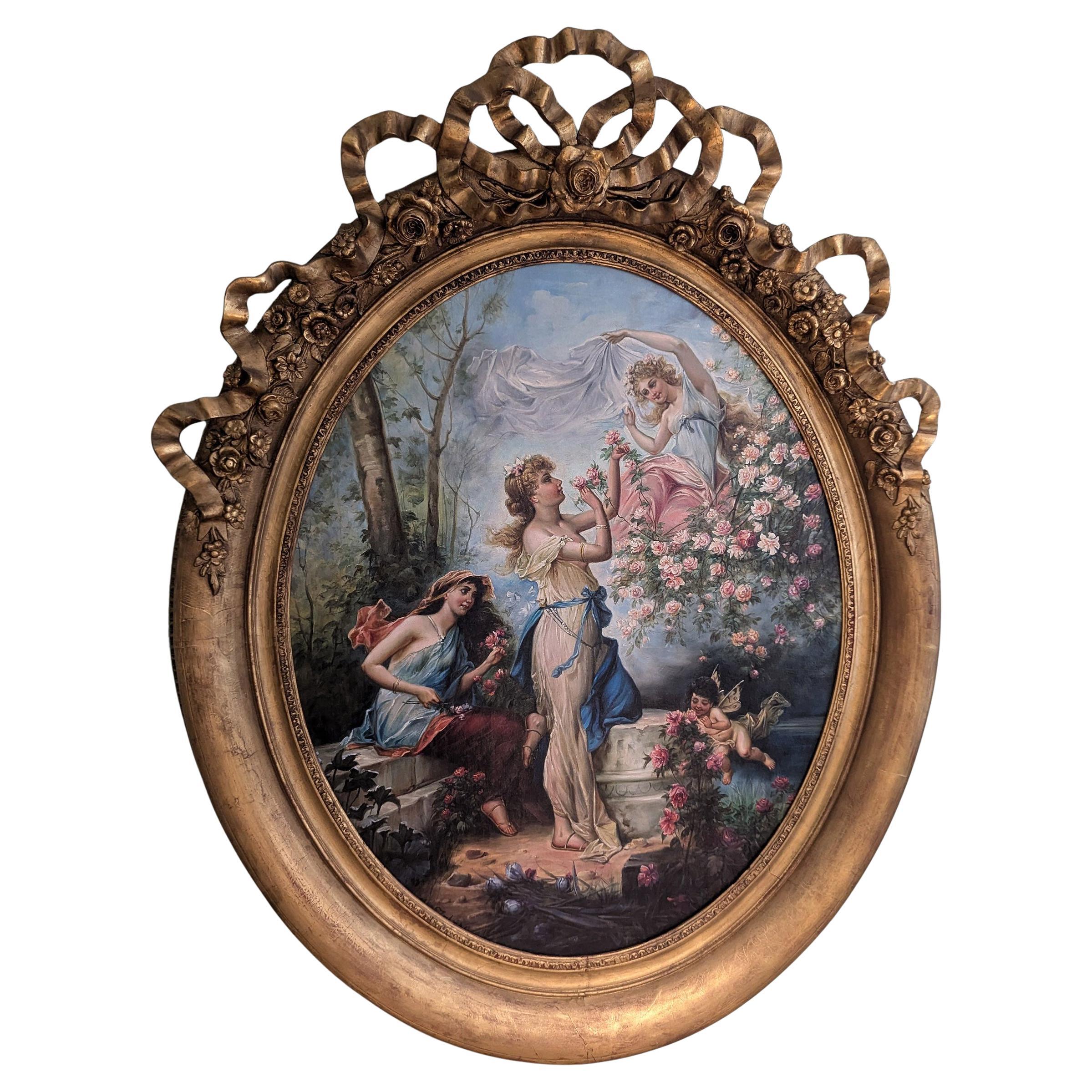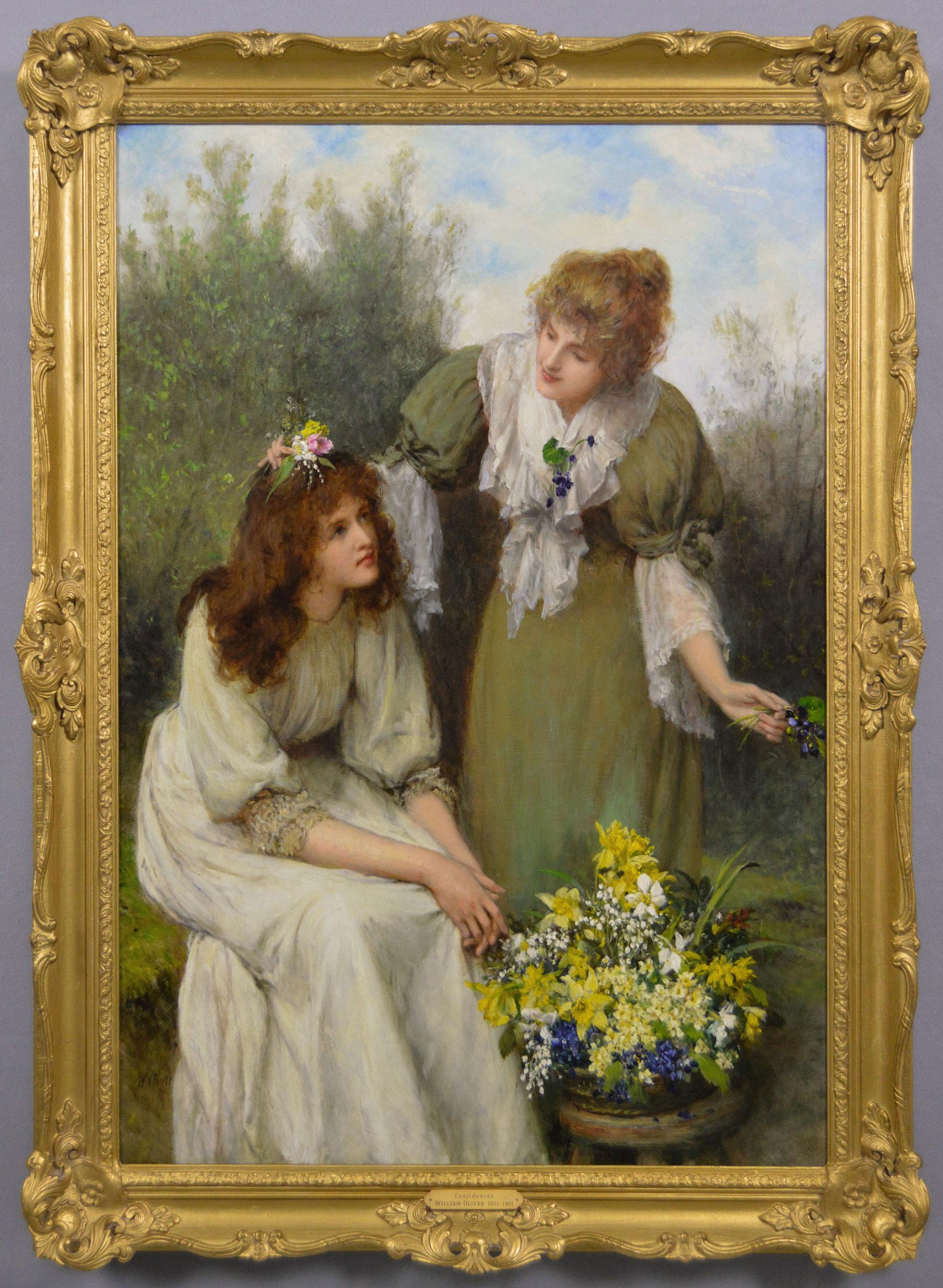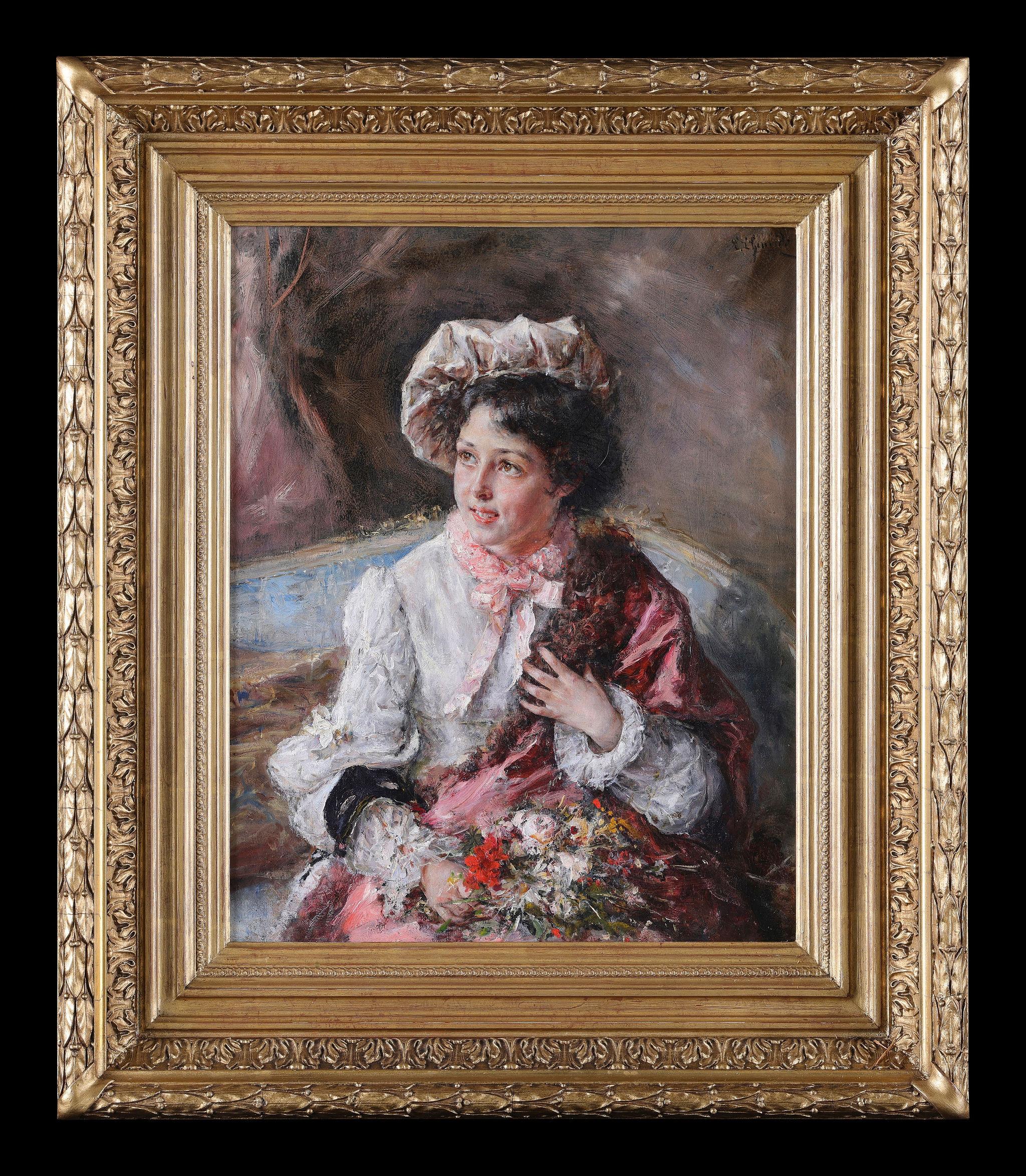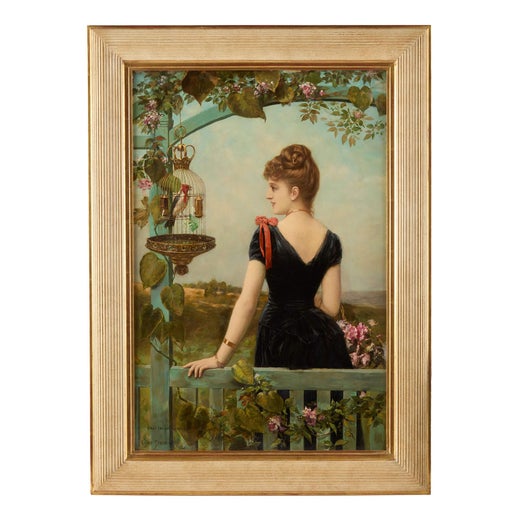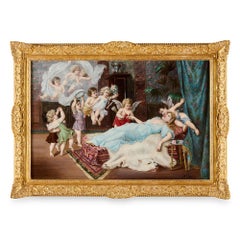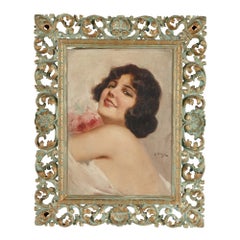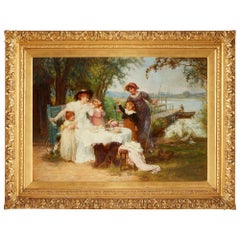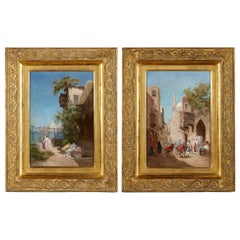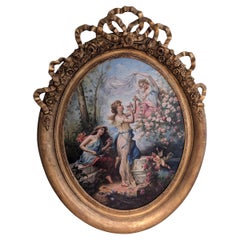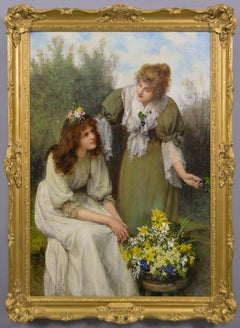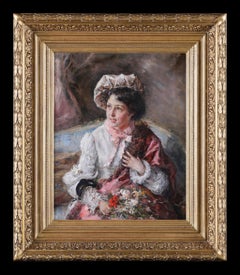Émile Eisman-Semenowsky'Flower maidens, ' a large oil-on-canvas painting by Émile Eisman-Semenowskyc.1900
c.1900
About the Item
- Creator:Émile Eisman-Semenowsky (1857 - 1911, French)
- Creation Year:c.1900
- Dimensions:Height: 28.55 in (72.5 cm)Width: 43.71 in (111 cm)Depth: 3.55 in (9 cm)
- Medium:
- Movement & Style:
- Period:
- Condition:
- Gallery Location:London, GB
- Reference Number:Seller: 171941stDibs: LU674311163292
Émile Eisman-Semenowsky
Émile Eisman-Semenowsky was born in 1859 in Poland. He studied art outside Poland and in the early 1880’s moved to Paris where he became an assistant to the Belgian artist Jan Van Beers (1852–1927). Under Van Beers he started to produce portraits mostly of fashionable women, later specialising in romantic Oriental style portraits aimed at the Parisian middle class. He also painted genre and historical scenes. He exhibited at the Royal Academy of Arts with works entitled 'Spring-Time' and 'After the Dance'. His paintings are highly popular and can be found in private and public art collections including the Manchester City Gallery.
- ShippingRetrieving quote...Shipping from: London, United Kingdom
- Return Policy
More From This Seller
View AllEarly 20th Century Figurative Paintings
Canvas, Oil
Early 20th Century Impressionist Portrait Paintings
Canvas, Oil
Late 19th Century Victorian Figurative Paintings
Canvas, Wood, Oil
Frederick MorganFred Morgan, ‘The Hero of the Hour’, Large Victorian Oil Painting, Late 19th Century
19th Century Romantic Figurative Paintings
Oil
1890s Victorian Portrait Paintings
Oil, Panel
Late 19th Century Figurative Paintings
Oil, Panel
You May Also Like
Antique Late 19th Century Austrian Paintings
Canvas, Giltwood, Paint
19th Century Victorian Figurative Paintings
Canvas, Oil
1890s Figurative Paintings
Oil
Early 20th Century Mannerist Figurative Paintings
Oil
Early 20th Century Belgian Art Nouveau Paintings
Gold Leaf
1890s Figurative Paintings
Oil
Read More
Exquisite Sèvres Porcelain Brings More to the Table than Dishes
The elegant ceramics represent the best of French artistry and innovation.
What Is Ormolu, and Why Are We Talking about It?
This golden material glamorized neoclassical furnishings and transformed upper-crust sitting rooms from France to Philadelphia in the 18th and early 19th centuries.
